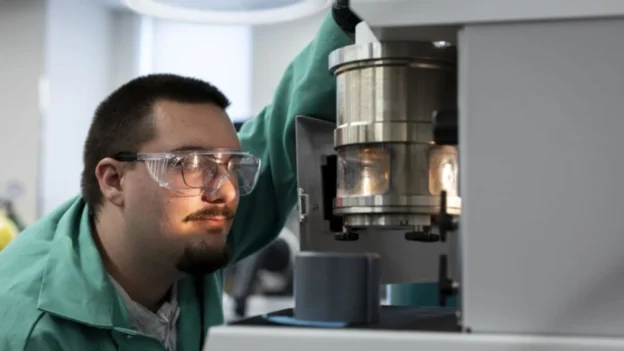Researchers at the University at Albany have developed a new compound with the potential to improve rocket fuel used in space missions. space missions. It is manganese diboride (MnB₂), a material that releases significantly more energy than the aluminum currently used in rockets.
According to the team led by Professor Michael Yeung, this composite provides more than 20% more energy per unit mass and up to 150% more per volume, thus optimizing the use of space in missions where every centimeter counts. Its high energy density would make it possible to reduce the amount of fuel needed, opening up space for more payloads or research instruments.
Safety and structure of the new rocket fuel
One of the most outstanding attributes of this material is its stability up to the moment of ignition, which only occurs upon contact with an agent such as kerosene. This makes it a viable option not only for its performance, but also for its operational safety.
Thanks to computational simulations, the team discovered that the energy in MnB₂ comes from a subtle structural deformation at the molecular level. This type of deformation indicates an internal buildup of energy, ready to be released upon activation of the compound.
Materials science and technology
The synthesis of MnB₂ was not straightforward. It required the use of an arc melter to heat a boron-manganese pellet to temperatures in excess of 3000 °C. This procedure generated a compressed atomic structure, comparable to a spring under tension, ready to release its energy upon activation.
In addition to its potential applications in space propulsion, the compound and its boron chemical base are being studied as catalysts for the decomposition of plastics and the manufacture of more durable catalytic converters.
Breakthrough with implications beyond space
The finding adds to efforts to develop new materials that overcome current limitations in hardness, stability and energy efficiency. For the Albany researchers, MnB₂ represents not only a chemical achievement, but an opportunity to redefine critical technologies in fields such as space exploration, recycling and automotive.
The research was published in the Journal of the American Chemical Societymarking an important step toward the future of the advanced space advanced.
Source and photo: University at Albany

